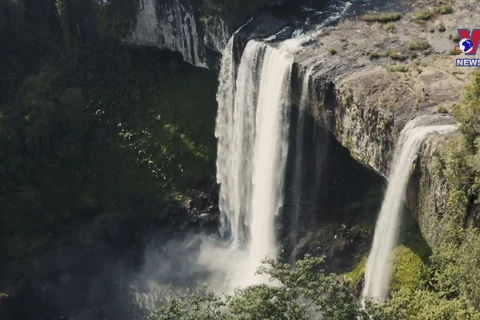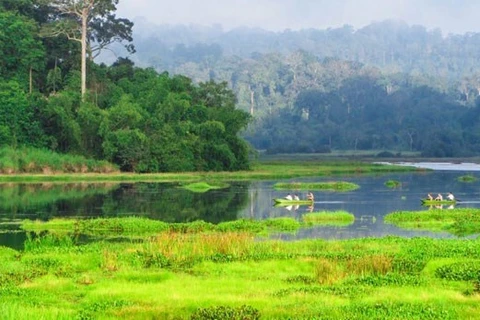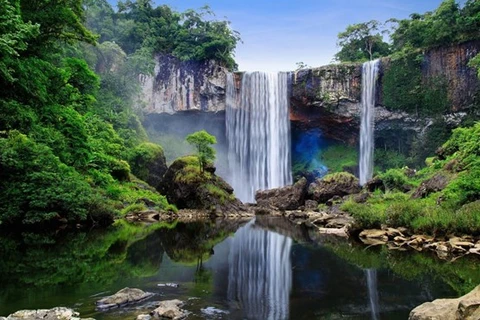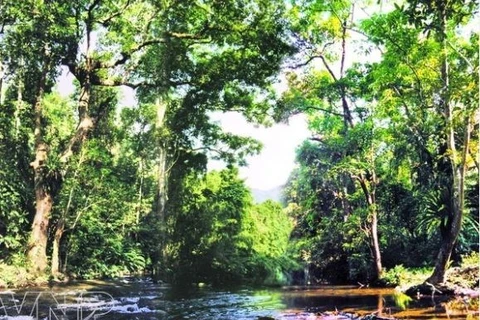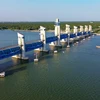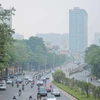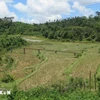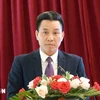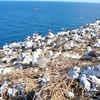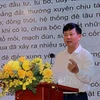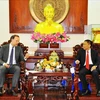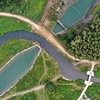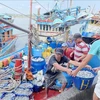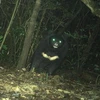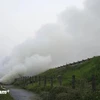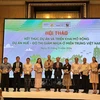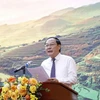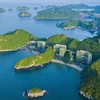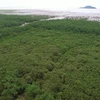 The Nui Chua Biosphere Reserve in the south central province of Ninh Thuan is a typical and unique dry forest ecosystem in Vietnam and Southeast Asia. (Photo: VNA)
The Nui Chua Biosphere Reserve in the south central province of Ninh Thuan is a typical and unique dry forest ecosystem in Vietnam and Southeast Asia. (Photo: VNA) Ninh Thuan (VNA) – The Nui Chua Biosphere Reserve in the central province of Ninh Thuan is a typical and unique dry forest ecosystem in Vietnam and Southeast Asia.
The 106,646-ha Nui Chua Biosphere Reserve encompasses the terrestrial and marine areas of Ninh Thuan and is located at the end of the Truong Son Mountain Range where the climate is harsh with sunny, hot and arid weather and minimal rainfall.
The Biosphere Reserve was recognised by UNESCO at the 33rd session of its International Coordinating Council of the Man and the Biosphere Programme (MAB-ICC) in Nigeria from September 13-17, 2021.
The recognition demonstrates the international recognition of biodiversity values as well as efforts of Vietnam and Ninh Thuan province in particular to conserve nature and promote sustainable development.
Typical and unique dry forest ecosystem
The forest ecosystem in the reserve is of special value as it belongs to the Annamites (Greater Annamites – SA4 area), one of the 200 globally important ecological regions and one of the highest conservation priority areas of all major habitat types on the Earth.
The area has the harshest climate in Vietnam with an annual average rainfall ranging from 700-800 mm, and hot sun weather all year round, scientists said.
Hot and dry weather has formed a particular ecosystem covering an area of about 10,600 ha, accounting for about 35 percent of the Nui Chua Biosphere Reserve’s natural area.
Plants in this ecosystem are drought tolerant. They are deciduous in the dry season. Their leaves are small, thick, and serrated.
With these unique characters, the Nui Chua Biosphere Reserve is also said to be an unique meadow of "thorny trees" in Vietnam.
The Nui Chua Biosphere Reserve is endowed with 1,511 species of flora, of which 54 are recorded in the Vietnam Red Data Book and the International Union for Conservation of Nature (IUCN) Red List.
It is also home to 765 animal species including mammals, birds and amphibians.
With a sea area of 7,352 ha, the underwater ecosystem of the Nui Chua National Park – the core area of the Nui Chua Biosphere Reserve, is also equally rich. It is home to 304 species of corals, 188 types of seaweed, 147 species of fish, 115 species of molluscs, and 80 species of crustaceans.
The Nui Chua Biosphere Reserve also boasts tangible and intangible cultural values of the local community, especially culture of the Cham ethnic minority people.
This biosphere reserve plays an important role in socio-economic development and maintaining the ecological balance of not only the Central Highlands region but also the central and southeast regions of Vietnam.
Efforts to preserve and promote biodiversity value
To improve the efficiency of preserving and promoting the biodiversity value, the Management Board of the Nui Chua Biosphere Reserve has focused on mobilizing investment sources for studying and conserving biodiversity through tourism activities.
Attention has been paid to developing ecotourism, including sea tourism, forest tourism, tours for scientific research and environmental education, and resort tourism.
This development scheme follows the principle of not changing landscape, not causing adverse impacts on flora and fauna resources or reducing biodiversity and polluting the environment, ensuring sustainable development for conservation of genetic resources and biodiversity in the reserve.
Communication activities have been organised to raise public awareness of environmental protection.
Deputy Minister of Foreign Affairs Dang Hoang Giang, who is also President of the Vietnam National Commission for UNESCO, said UNESCO’s recognition has contributed to promoting Vietnam’s image of land, people and culture to international friends.
He underlined the need for the local authorities to focus on protecting and promoting values of the reserve, suggesting the local authorities include the work in the locality’s socio-economic development plan./.


